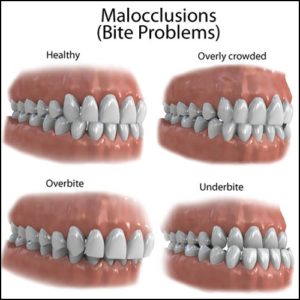Do you suspect an overbite problem in your child? Don’t wait until they are older to have it corrected! Early intervention is crucial for effectively managing orthodontic issues like overbites.
What is an Overbite?
An overbite occurs when the upper jaw is positioned too far forward compared to the lower jaw, causing the upper teeth to overlap the lower teeth more than what's considered normal. This misalignment can lead to various complications if not addressed in a timely manner.
Why Early Treatment is Important
When a child experiences an overbite, it's typically due to a deficiency in the upper jaw. The upper jaw is easier to manipulate when a patient is younger, as the jaw bones are still malleable. If left untreated, the condition can worsen, requiring more extensive procedures later, such as breaking and realigning the jaw bones, which tend to be more invasive and time-consuming.
Most children aren’t referred to an orthodontist until they are between the ages of ten and twelve. However, if your child shows signs of bite problems, it’s important to consult an orthodontist much sooner.
Factors Contributing to Overbites
Overbites can arise from several causes, including:
- Hereditary Issues: Family history can play a significant role in jaw and teeth alignment.
- Poor Chewing Habits: Prolonged thumb sucking or prolonged use of pacifiers can impact jaw development.
- Jawbone Abnormalities: Some children may have congenital conditions affecting their jaw growth.
Consequences of Untreated Overbites
If not addressed, an overbite can lead to several problems, including:
- Jaw Pain: Misalignment can lead to discomfort and pain in the jaw.
- Excessive Wear on Tooth Enamel: Abnormal bite forces can wear down the enamel, leading to sensitivity and decay.
- Impeded Speech: Significant overbites may interfere with speech formation, causing clarity issues.
- Tooth Decay: Misaligned teeth can create places where food gets trapped, increasing the risk of cavities.
- Gum Disease: Malocclusions can make it more difficult to maintain proper oral hygiene, leading to gum issues.
Recognizing an Overbite in Your Child
While many overbites are not severe, some cases warrant immediate attention. A severe overbite is typically visibly noticeable and may lead to challenges like those mentioned above. Here are signs to watch for:
- The upper teeth noticeably overlap the lower teeth.
- Difficulty in biting or chewing food.
- Complaints of jaw or tooth discomfort.
Don’t Wait: Time is of the Essence!
If you think your child has a bite issue or may develop one, act quickly! At Cater Galante Orthodontic Specialists, we understand that each child’s orthodontic needs are unique. That is why we offer free consultations to evaluate your child's dental alignment and discuss potential treatment plans.

